Would you like to integrate a cork floor into your home? If you like the idea but you don’t know the subject in depth, we will reveal the various models, advantages, prices, details on maintenance and everything you need to know about cork floors. Let’s find out more together.
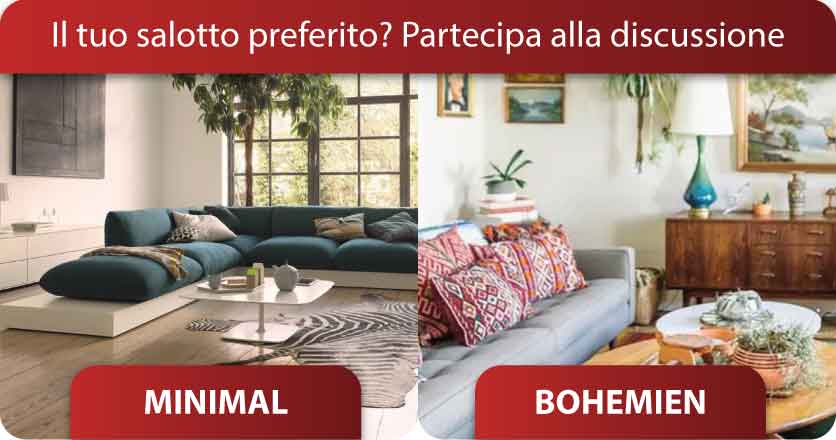
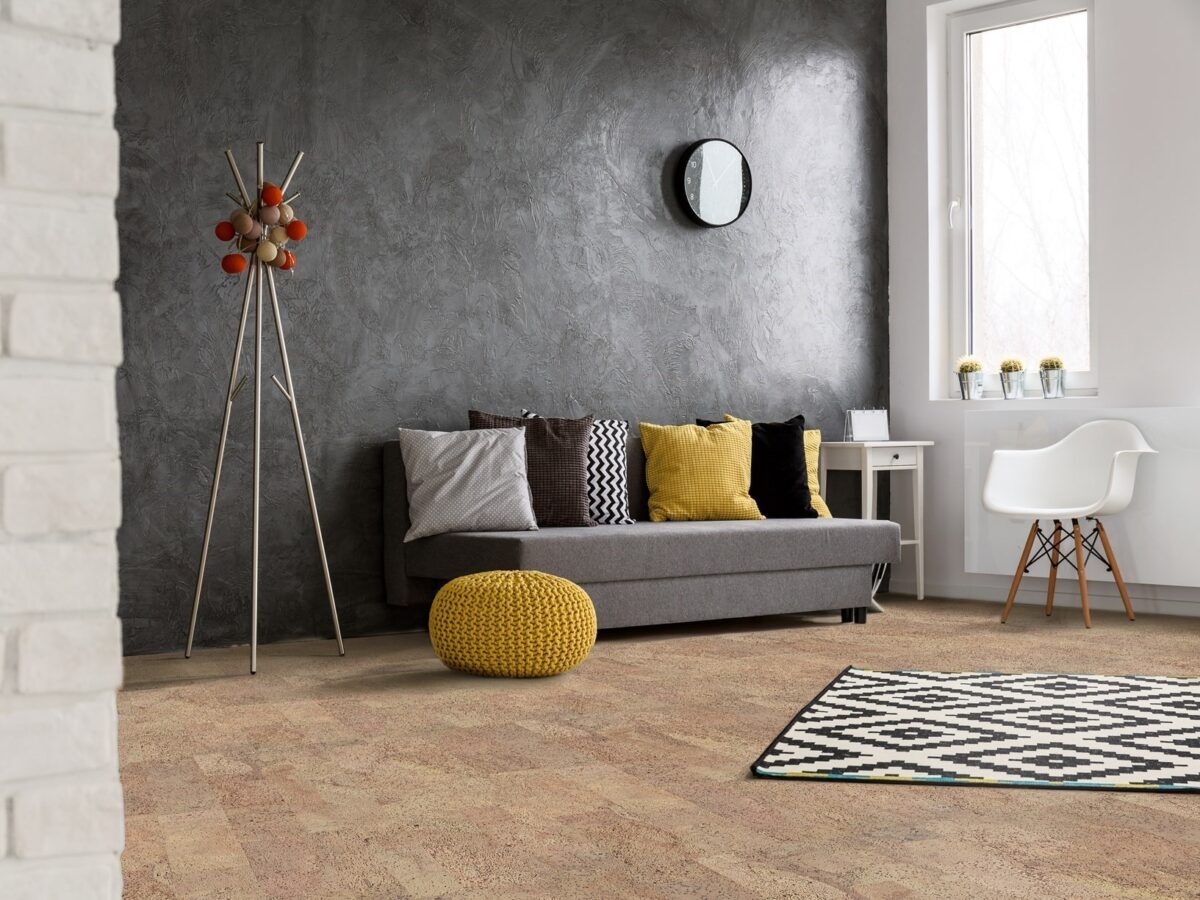
Cork floor: what it is
The cork floor, similar to a parquet floor, is 100% composed from this natural original material and is structured according to a scheme that involves the assembly of different parts:
- Cork bottom with the aim of isolating the environment
- Cork part to create a cluster
- Surface layer in cork, with decorative purpose.
This material it is obtained from the outermost part of the trunks of trees, the bark, especially from trees oak. The largest producer of cork in the Mediterranean area is Portugal, followed by Spain and some North African countries.
Read also: Christmas place cards: 13 ideas with corks
Cork it is obtained through a non-invasive procedure which is called debarking. This step requires the superficial part of the bark to be gently removed, leaving the tree alive and will allow a new layer of cork to reproduce in the following nine years. One material, therefore, eco-friendly and very low impact. The whole procedure is done by hand, without the use of machinery.
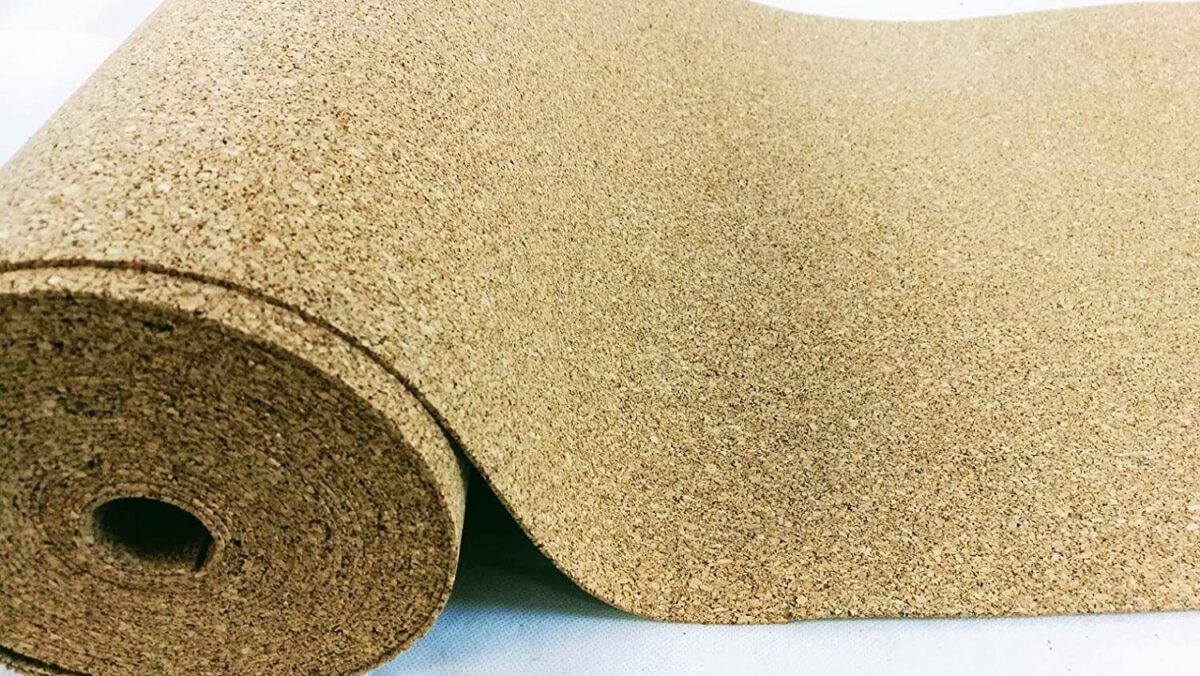
Cork floor: advantages and disadvantages
Although the use of the cork has been intended for many centuries for the purpose of creating small objects, such as caps, today it is widely used for the construction of artifacts, objects and building works on a grand scale. From bags to furnishing accessories, cork has conquered several markets thanks to its characteristics.
It is about a ductile, light and easy to work material, but let’s see together what are the advantages and disadvantages regarding a cork floor.
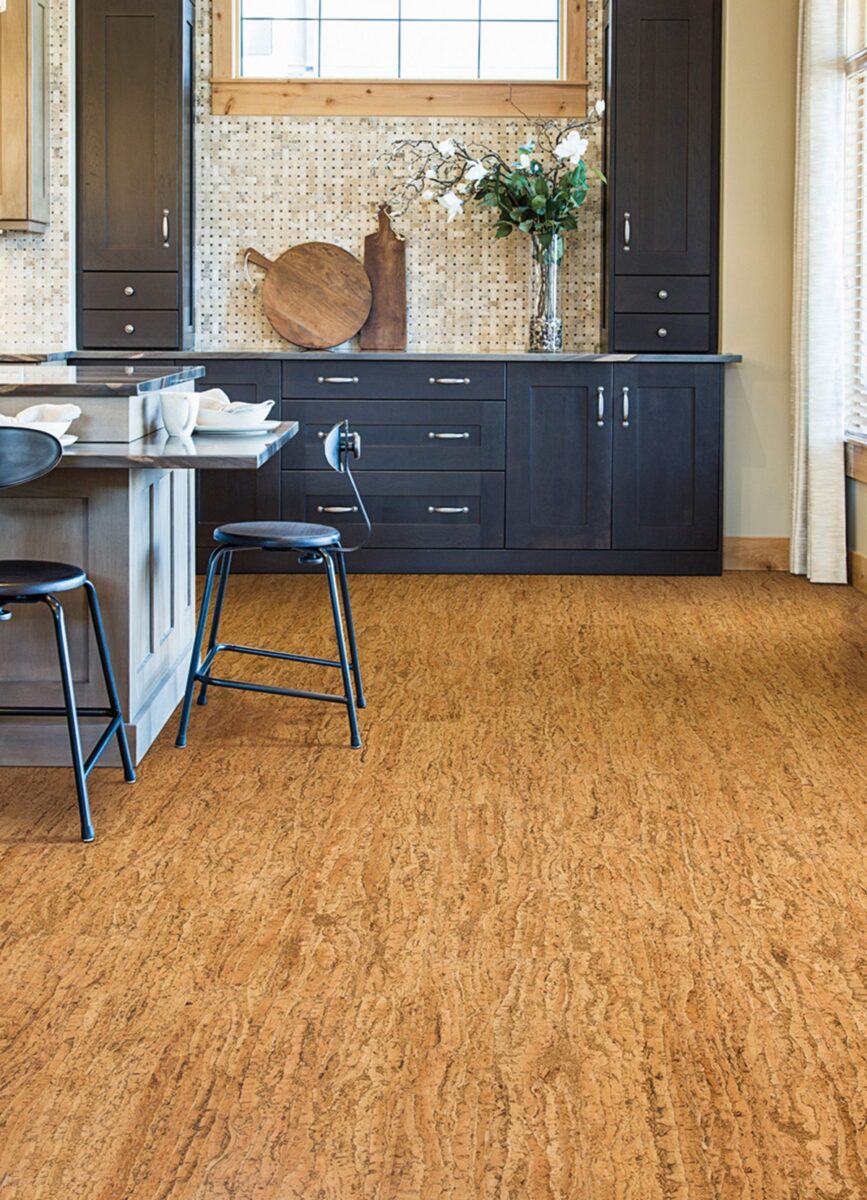
Advantages
A cork floor is the best choice because:
- It is a excellent thermal insulator which keeps the environment warm or cool during the cycle of the seasons;
- Very pleasant to touch and to trample on;
- Guarantees thesoundproofing of the rooms;
- It is a product eco-friendly, the use of which does not harm the environment;
- It’s a natural shock absorber, capable of promoting walking and joint mobility;
- It does not suffer the impact of falling objects, as it reduces the impact;
- It is about a very resistant material and lasting over time;
- Very suitable for counteract allergy problems, thanks to its natural antibacterial properties;
- It is a material very cheap.
Disadvantages
The advantages that the cork floor encloses are many, on the other hand there are some disadvantages:
You may be interested in: Modern floors
- It is not a material resistant to water and moisture;
- Requires good maintenance and cleaning practice.
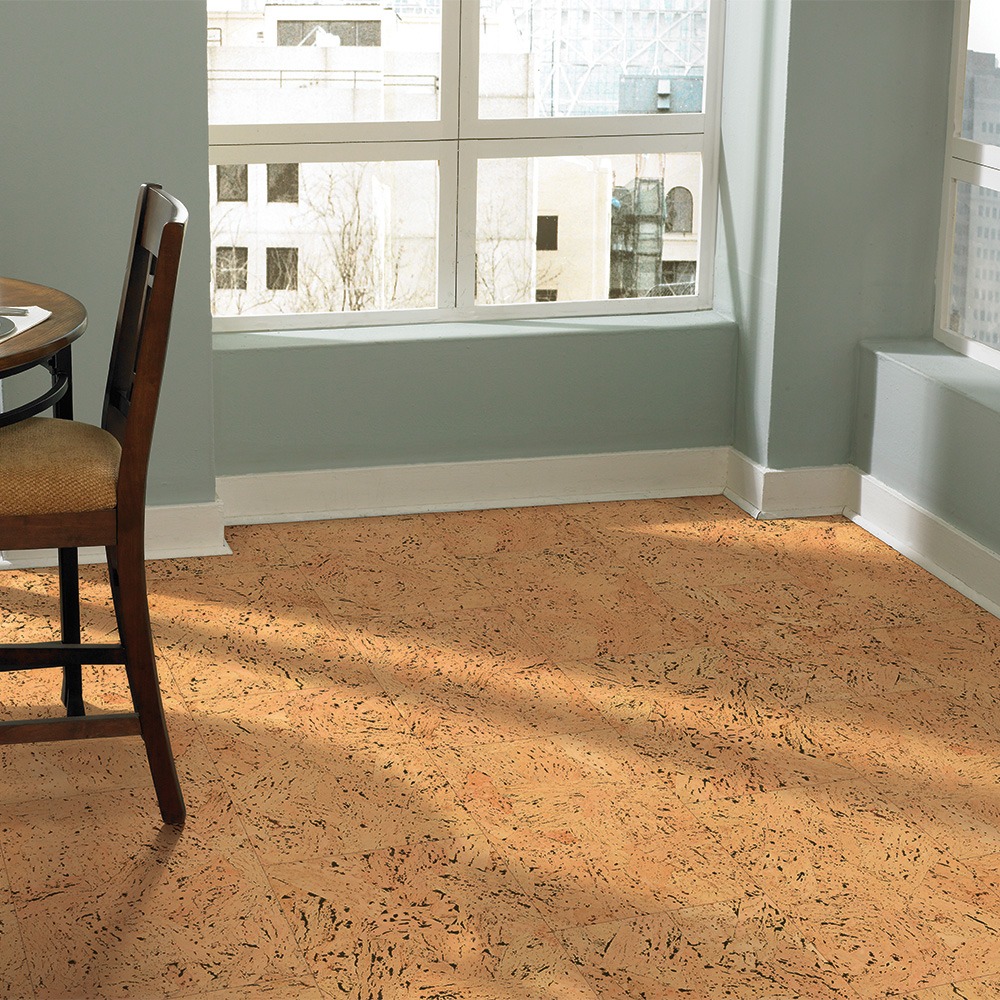
Cork floor: models and proposals
The first approach in choosing a cork floor is to evaluate the element in its natural color, clear and untreated.
This first proposal is perfect if your home is simple, with rustic tones and without particular fantasy in the furniture, which develops in a linear way.
If, on the other hand, your style embodies a more refined personality, you can opt for a colored cork floor and treated and also from the shape structured, reminiscent of that of the parquet boards, joined together in a pattern of intersections and joints.
You can find cork treated in orange, beige or white colors.
However, if cork does not conquer you aesthetically but you love its advantageous and convenient features, you can opt for a floor with the structure in this material, and covered on the top with other materials.
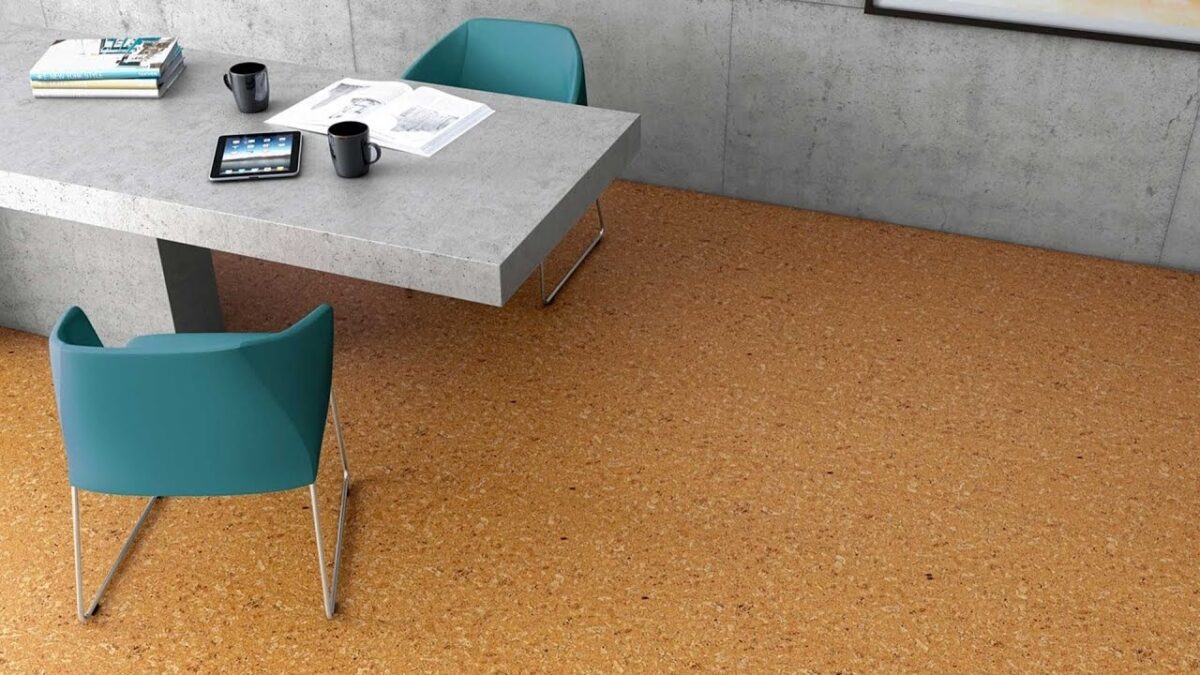
Cork floor: maintenance
The cork floor it can be installed in two ways: the first involves the use of glue, the second instead involves the interlocking of several plugs. Whatever the method of implementation of the product, it will be fundamental proceed with ordinary but very delicate maintenance and cleaning. We recommend theuse of classic household appliances to eliminate dust (vacuum cleaner, robot vacuum cleaner) or theuse of a dry cloth for wood and parquet.
Regarding the washing it is recommended to use a damp but not wet rag, as, as we have said, cork is not resistant to water and humidity.
Cork floor: price
The average price for a cork floor is around € 25 per square meter. The price can increase if you opt for a treated floor, colored or combined with other materials, such as wood, vinyl or PVC.
Furthermore, to install the cork floor it is very important to contact professionals in the sector, so that the work is done in the best possible way, which often include the labor and installation of the floor in the starting price.

Cork floor: photos and images
A surprising material that transforms the floor into a functional element, which retains heat, is resistant and long-lasting. Here is our photo gallery of cork floors.
Would you like to integrate a cork floor into your home? If you like the idea but you don’t know the subject in depth, we will reveal the various models, advantages, prices, details on maintenance and everything you need to know about cork floors. Let’s find out more together.


Cork floor: what it is
The cork floor, similar to a parquet floor, is 100% composed from this natural original material and is structured according to a scheme that involves the assembly of different parts:
- Cork bottom with the aim of isolating the environment
- Cork part to create a cluster
- Surface layer in cork, with decorative purpose.
This material it is obtained from the outermost part of the trunks of trees, the bark, especially from trees oak. The largest producer of cork in the Mediterranean area is Portugal, followed by Spain and some North African countries.
Read also: Christmas place cards: 13 ideas with corks
Cork it is obtained through a non-invasive procedure which is called debarking. This step requires the superficial part of the bark to be gently removed, leaving the tree alive and will allow a new layer of cork to reproduce in the following nine years. One material, therefore, eco-friendly and very low impact. The whole procedure is done by hand, without the use of machinery.

Cork floor: advantages and disadvantages
Although the use of the cork has been intended for many centuries for the purpose of creating small objects, such as caps, today it is widely used for the construction of artifacts, objects and building works on a grand scale. From bags to furnishing accessories, cork has conquered several markets thanks to its characteristics.
It is about a ductile, light and easy to work material, but let’s see together what are the advantages and disadvantages regarding a cork floor.

Advantages
A cork floor is the best choice because:
- It is a excellent thermal insulator which keeps the environment warm or cool during the cycle of the seasons;
- Very pleasant to touch and to trample on;
- Guarantees thesoundproofing of the rooms;
- It is a product eco-friendly, the use of which does not harm the environment;
- It’s a natural shock absorber, capable of promoting walking and joint mobility;
- It does not suffer the impact of falling objects, as it reduces the impact;
- It is about a very resistant material and lasting over time;
- Very suitable for counteract allergy problems, thanks to its natural antibacterial properties;
- It is a material very cheap.
Disadvantages
The advantages that the cork floor encloses are many, on the other hand there are some disadvantages:
You may be interested in: Modern floors
- It is not a material resistant to water and moisture;
- Requires good maintenance and cleaning practice.

Cork floor: models and proposals
The first approach in choosing a cork floor is to evaluate the element in its natural color, clear and untreated.
This first proposal is perfect if your home is simple, with rustic tones and without particular fantasy in the furniture, which develops in a linear way.
If, on the other hand, your style embodies a more refined personality, you can opt for a colored cork floor and treated and also from the shape structured, reminiscent of that of the parquet boards, joined together in a pattern of intersections and joints.
You can find cork treated in orange, beige or white colors.
However, if cork does not conquer you aesthetically but you love its advantageous and convenient features, you can opt for a floor with the structure in this material, and covered on the top with other materials.

Cork floor: maintenance
The cork floor it can be installed in two ways: the first involves the use of glue, the second instead involves the interlocking of several plugs. Whatever the method of implementation of the product, it will be fundamental proceed with ordinary but very delicate maintenance and cleaning. We recommend theuse of classic household appliances to eliminate dust (vacuum cleaner, robot vacuum cleaner) or theuse of a dry cloth for wood and parquet.
Regarding the washing it is recommended to use a damp but not wet rag, as, as we have said, cork is not resistant to water and humidity.
Cork floor: price
The average price for a cork floor is around € 25 per square meter. The price can increase if you opt for a treated floor, colored or combined with other materials, such as wood, vinyl or PVC.
Furthermore, to install the cork floor it is very important to contact professionals in the sector, so that the work is done in the best possible way, which often include the labor and installation of the floor in the starting price.

Cork floor: photos and images
A surprising material that transforms the floor into a functional element, which retains heat, is resistant and long-lasting. Here is our photo gallery of cork floors.

